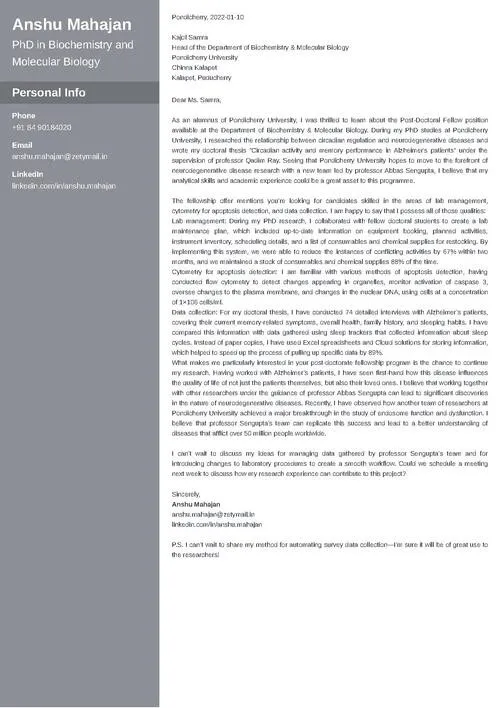What is a Postdoc Cover Letter?
A Postdoc cover letter is a crucial document that accompanies your application for a postdoctoral research position. It serves as your introduction to the hiring committee, providing an opportunity to highlight your qualifications, research experience, and motivations for pursuing the position. Unlike a general job application letter, a postdoc cover letter is highly specialized, focusing on your academic achievements, research skills, and alignment with the specific research goals of the institution. It’s your chance to make a strong first impression and persuade the committee that you are the ideal candidate for the role. The letter should be concise, well-structured, and tailored to the specific requirements and expectations of the position you are applying for, demonstrating your understanding of the research and your potential contributions.
Why is a Postdoc Cover Letter Important?
The importance of a Postdoc cover letter cannot be overstated. It’s not merely a formality, but a strategic tool for showcasing your suitability for a particular research role. Firstly, it allows you to demonstrate your understanding of the research area and the specific research the institution is undertaking. This demonstrates that you’ve done your homework and are genuinely interested in the position, not just applying for any available opportunity. Secondly, the cover letter enables you to contextualize your CV. It allows you to elaborate on your skills, experiences, and achievements in a way that is not possible in a CV, providing more detail on the research you’ve conducted, the methodologies you’ve employed, and the impact of your work. Furthermore, it’s a chance to express your enthusiasm for the position, highlighting your personal and professional goals and how they align with the institution’s research objectives. A well-crafted cover letter sets you apart from the competition and significantly increases your chances of getting an interview.
Step 1 Research the Position and the Institution
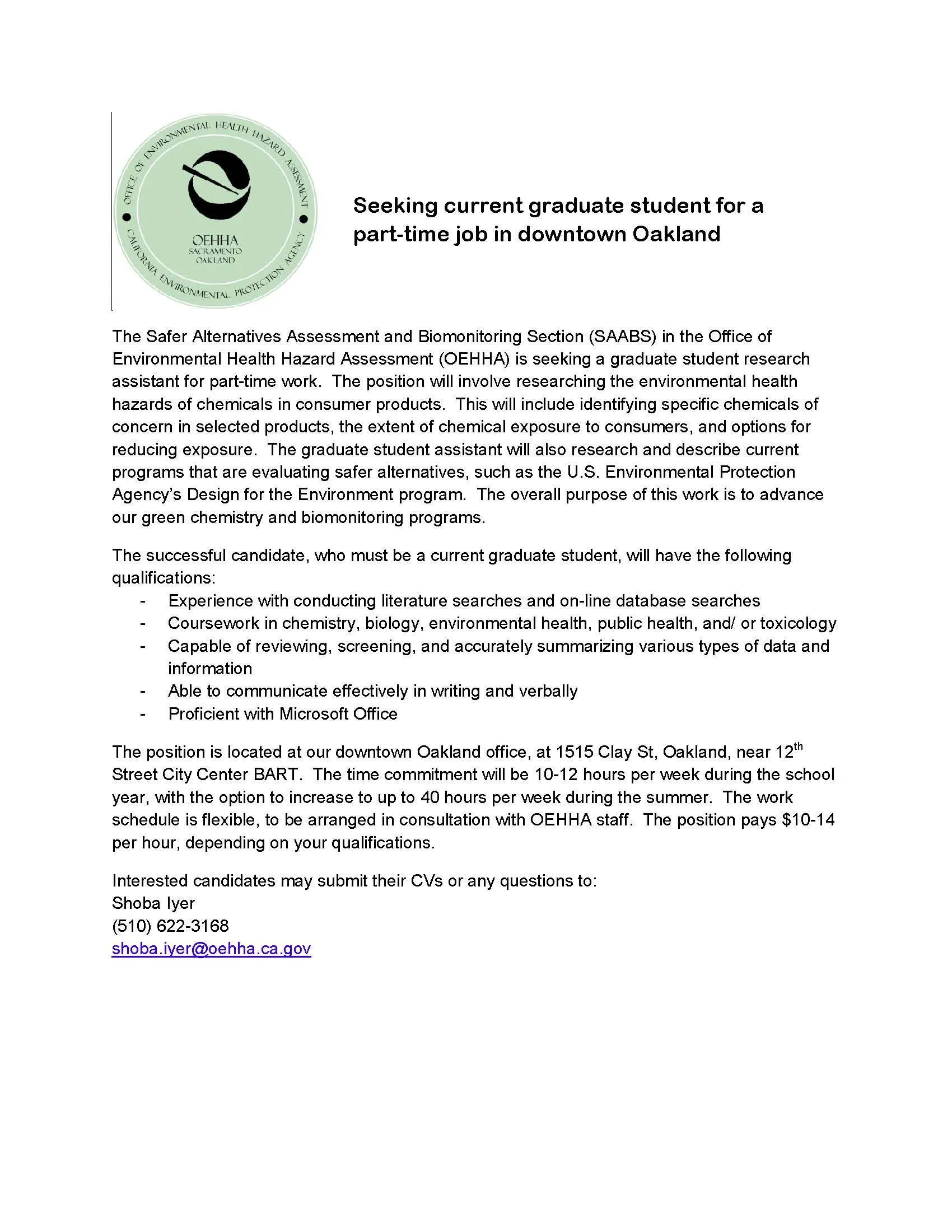
Before you begin writing your cover letter, you must conduct thorough research on both the specific postdoctoral position and the institution offering it. This research is essential for tailoring your letter to the specific needs and expectations of the hiring committee. Start by carefully examining the job description, paying close attention to the required skills, experiences, and the research focus of the laboratory or department. Identify the key qualifications and how your background aligns with these requirements. Next, delve into the institution’s website, exploring the research being conducted by the principal investigator (PI) or research group you’re applying to work with. Understand their publications, ongoing projects, and the overall research direction. This information will be crucial when demonstrating your understanding of their work and how your skills can contribute to their goals.
Understanding the Research Focus
Gaining a comprehensive understanding of the research focus is paramount. Read the PI’s recent publications to understand their current projects, methodologies, and research interests. Look for common themes, the specific techniques they employ, and the overall impact of their work in the field. This knowledge will inform how you tailor your cover letter to demonstrate your relevant experience and show how your skills and research interests align with the PI’s. Identify the specific research questions the group is addressing and consider how your previous work relates to those questions. This will allow you to articulate a clear connection between your past research and the potential contributions you can make to the team. It’s also useful to consider how the research fits into the broader context of the field, and what kind of impact the research is making or is likely to make. This demonstrates your analytical abilities and understanding of the field.
Explore the Department’s Culture
In addition to the research focus, investigate the department’s culture and values. Look for information about the team’s environment, collaboration practices, and any specific expectations or requirements. Check the department’s website, read any available profiles of current postdocs and research staff, and look for information on any awards or recognition they may have received. This will help you understand the overall dynamics and expectations of the group. Moreover, understanding the department culture will give you insights into how you might integrate and collaborate within the team. Knowing the department’s approach to training, mentoring, and scientific collaboration will help you highlight your relevant skills and how your approach to research aligns with the group. Showing a grasp of the department’s values demonstrates your interest and commitment to working within that environment.
Step 2 Crafting the Header
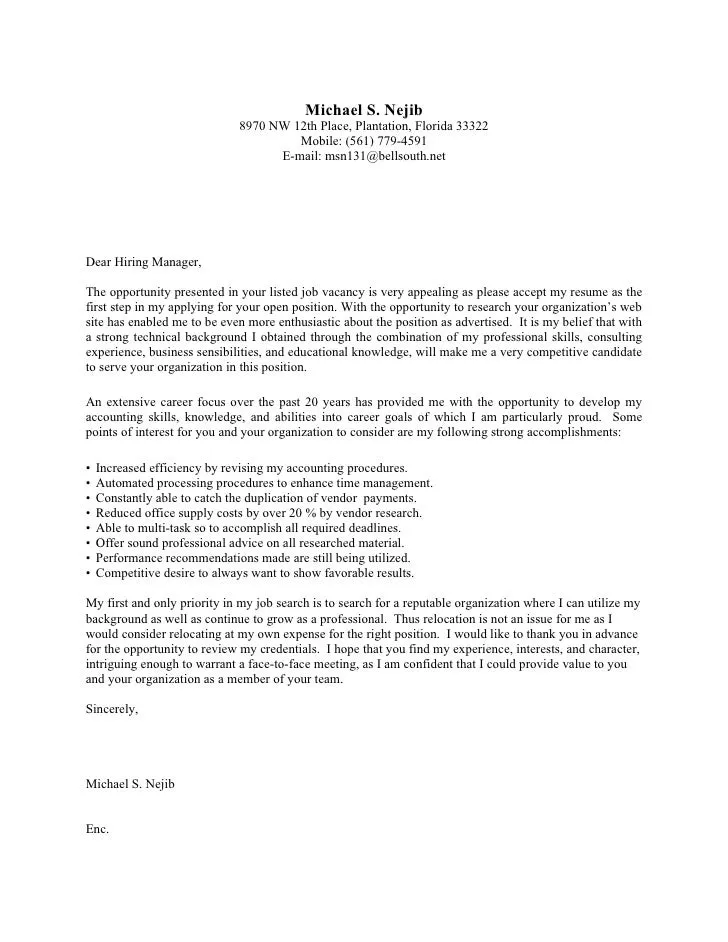
The header of your Postdoc cover letter is the first thing a hiring committee will see, so it’s important to get it right. The header should be clean, professional, and provide all the necessary contact information for the recipient. Make sure the header adheres to professional standards and that the information is clear and easy to read. This initial section sets the tone for the rest of your letter and demonstrates your attention to detail.
Your Contact Information
At the top left of your cover letter, clearly state your full name, professional title (e.g., Ph.D.), current address, phone number, and professional email address. Ensure that the email address is professional-sounding and appropriate for academic communications. Double-check all information for accuracy to avoid any potential errors that could hinder contact. It’s best to choose an email address that includes your name to make it simple for the reader to identify you. Make sure your phone number is easily accessible. Avoid any nicknames or informal language that might detract from the professional impression you’re trying to create.
Date and Recipient Information
On the right-hand side of the header, below your contact information, include the current date. Following the date, include the recipient’s name (the hiring manager or PI), their title, the department, and the university or institution’s address. If the name of the hiring manager is not specified in the job posting, try to find it on the department’s website or reach out to the department to inquire. Use their correct title and ensure that all details are accurate. This shows that you are paying attention to detail and that you have taken the time to personalize your application. Always verify that the contact information is up-to-date and correct to ensure the letter reaches the intended recipient.
Step 3 Writing the Introduction
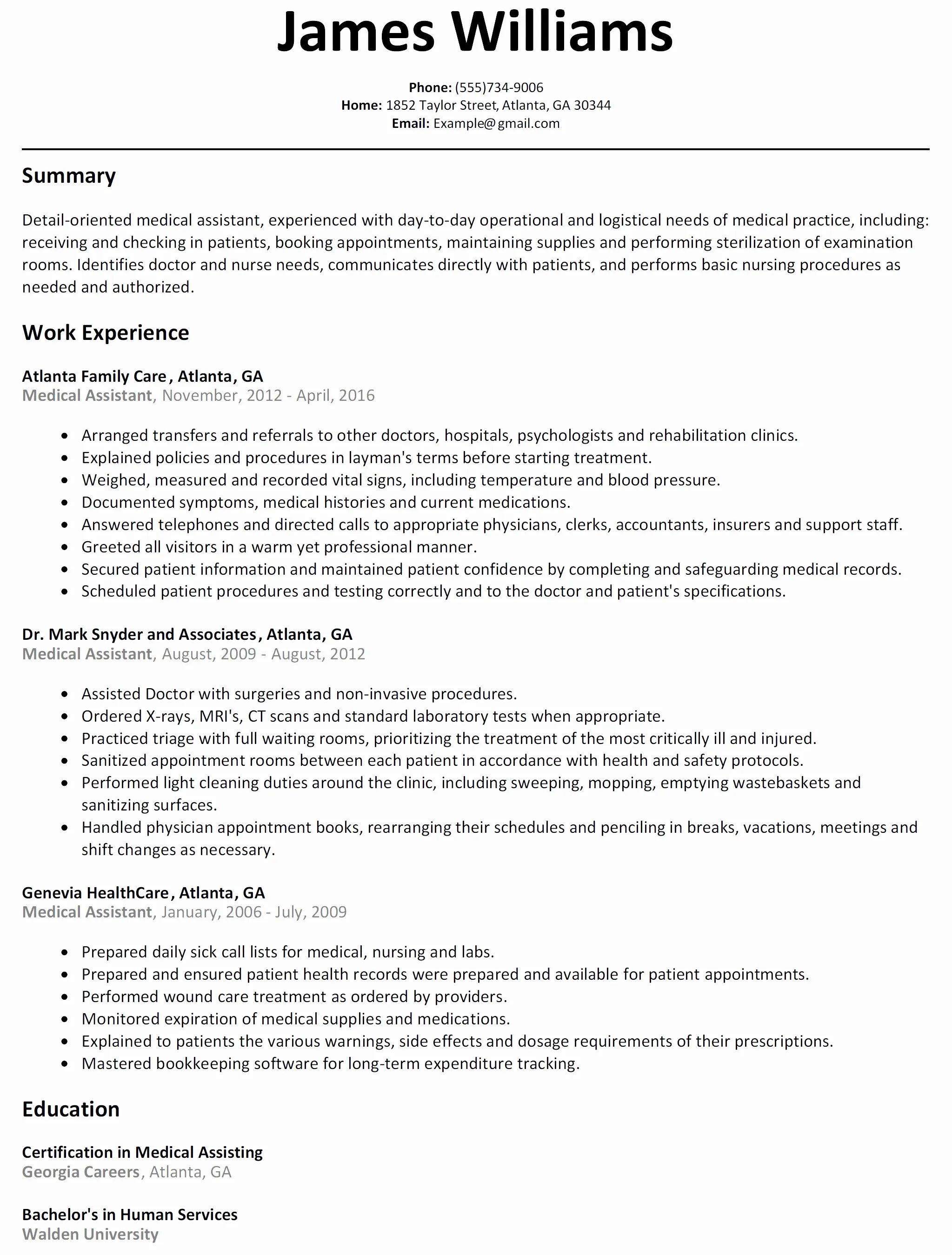
The introduction of your Postdoc cover letter is your first opportunity to capture the reader’s attention and set the tone for the rest of your application. It should be concise and engaging, immediately conveying your interest in the position and providing a brief overview of your key qualifications. The introduction sets the foundation for the rest of the letter, highlighting why you’re a suitable candidate. Make sure that you directly address the hiring manager and specify the exact position you are applying for, showing that you are serious and that you have the correct information. The goal is to make a strong first impression and encourage the reader to continue.
Expressing Enthusiasm
Start your introduction by clearly expressing your enthusiasm for the position and the opportunity. Use strong, positive language to show your genuine interest. Mention what specifically attracts you to the role or the research being conducted. For example, you might say, ‘I am writing to express my enthusiastic interest in the Postdoctoral Research position in [Department/Lab Name] at [Institution Name].’ This immediate expression of interest is crucial. Highlight what you find most appealing about the specific research area, the PI’s work, or the institution’s reputation. Showing that you are genuinely excited about the opportunity will make your letter more engaging and memorable.
Mentioning the Specific Position
Clearly state the specific position you are applying for, as advertised. Refer to the job title, and if there is a specific reference number, include it. This immediately clarifies your intent and helps the hiring committee process your application efficiently. For example, you could write, ‘I am writing to apply for the Postdoctoral Researcher position advertised on [Platform, e.g., university website, job board].’ Showing that you know exactly which position you are applying for demonstrates your attention to detail and your commitment to the application process. Make it easy for the hiring committee to understand which role you are targeting.
Step 4 Highlighting Your Qualifications and Experience
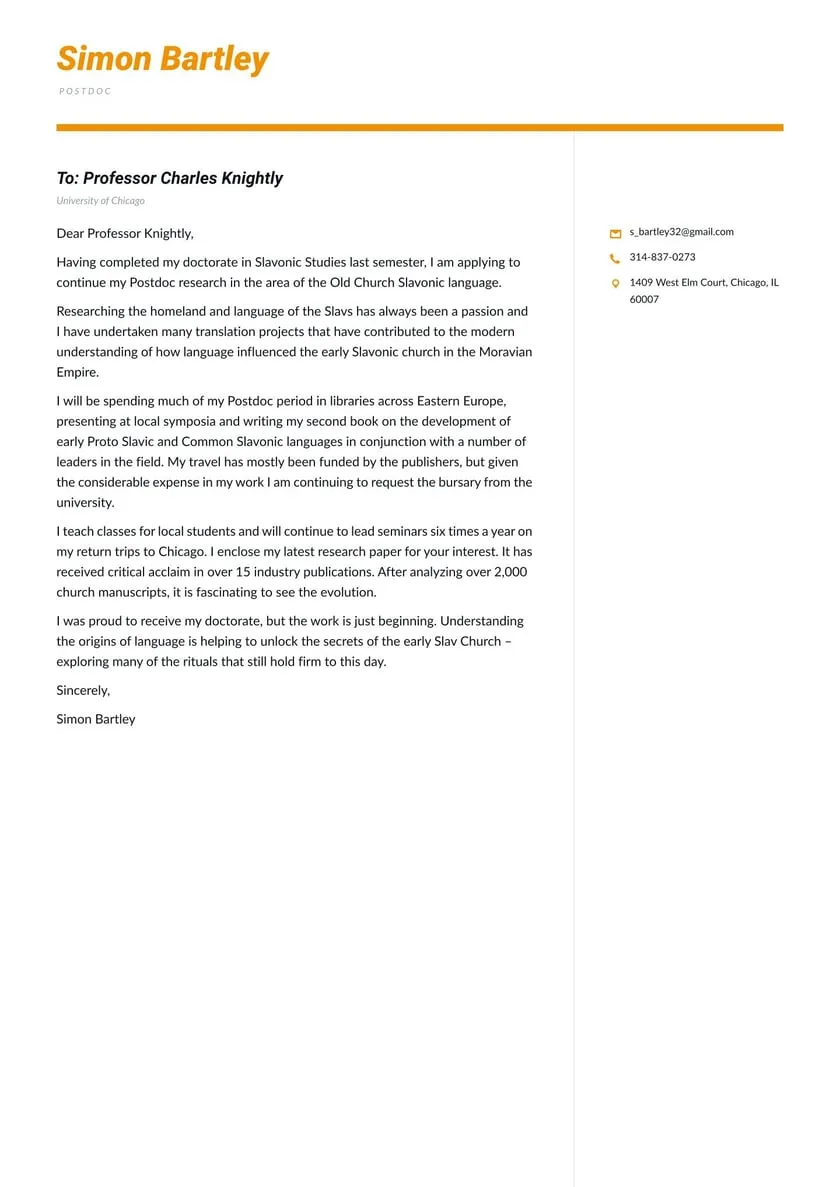
The body of your cover letter is where you highlight your qualifications and experience, linking them to the requirements outlined in the job description. This section is the core of your letter and should compellingly demonstrate your suitability for the role. Your experience should be relevant to the position’s needs, emphasizing the skills and expertise that you have developed throughout your academic career. Tailor the content to the specific position by highlighting achievements that directly align with the research objectives. Provide concrete examples and be specific about your contributions and outcomes. Do not simply list your accomplishments, but rather, explain how they relate to the position and the research goals. This will enable the hiring committee to see how you can directly contribute to the success of the research group.
Relevant Research Experience
Detail your most relevant research experience, emphasizing projects that align with the position’s requirements. Describe your role in each project, the methodologies you used, and the key findings or outcomes. Quantify your achievements whenever possible, using numbers, percentages, or any other measurable data to illustrate your impact. For instance, mention the number of publications you’ve authored, the grants you’ve secured, or any significant results you achieved. Highlight any specific techniques or skills you possess that are relevant to the research the group is doing. Showing a clear connection between your experience and the position’s needs is key to persuading the hiring committee that you have the expertise and background required to contribute effectively to the research.
Publications and Presentations
Provide a concise overview of your publications and presentations, which are significant indicators of your research productivity and scholarly contributions. List your most important publications, including the journal name, date, and a brief description of the research. Highlight any presentations or conference proceedings where you have presented your work. Mention any awards or recognitions you have received for your publications or presentations, as this enhances your credibility. Include your publication record in a clear, easy-to-read format, such as a list, which allows the hiring committee to quickly grasp your output. Ensure that the publications and presentations you highlight are relevant to the research position and demonstrate your ability to communicate your findings effectively within your field.
Step 5 Demonstrating Your Alignment with the Research
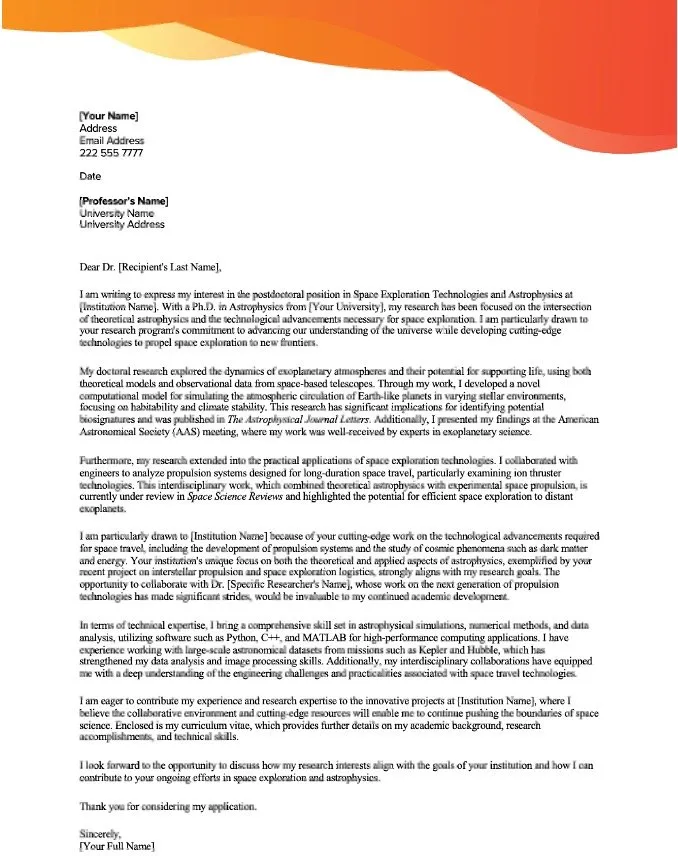
In this critical section, connect your experience to the research objectives, demonstrating that you understand the research group’s goals and how your skills and experience make you a suitable candidate. Illustrate how your skills and prior research align with the specific research being conducted by the team. This involves clearly articulating how your expertise can contribute to their projects, the methodologies you’re proficient in, and the outcomes you can help achieve. Show the committee that you have not only reviewed their work but that you understand the research and can make substantial contributions to it. This will make your application stand out.
Addressing the Research Needs
Show that you understand the specific research needs and challenges of the position. Explain how your research background enables you to address these needs, detailing your skills and experiences and how they can directly contribute to the group’s research goals. For example, if the research requires expertise in a particular methodology, highlight your proficiency in that area. Discuss how you would approach the research problems that the group is dealing with, demonstrating your insight into the specific questions and research direction. Demonstrating your research skills and ability to integrate and apply them within the framework of the group’s projects is essential.
Showcasing your Skills and Approaches
Highlight your relevant skills and how you approach research. Be specific about the techniques, tools, and methodologies you’re proficient in. Describe your research approach, and how it aligns with the group’s style and culture. Emphasize your problem-solving abilities and how you overcome challenges during your research. Mention any innovative techniques or approaches you’ve used that can benefit the team. Explain how your skills and methods complement the research goals and offer the potential to improve the research program. Highlighting your approaches, research skills, and ability to integrate and apply them within the framework of the group’s projects is essential to demonstrating that you’re a strong candidate.
Step 6 Expressing Your Interest and Availability
In the concluding section of your cover letter, reiterate your enthusiasm for the position and indicate your availability for an interview. Reiterate your strong interest in the opportunity, show that you are eager to discuss your qualifications further and that you’re prepared to contribute to the research objectives. Make it clear you are ready and accessible for the next steps of the application process, increasing your chances of an interview invitation. The goal is to leave a positive lasting impression, making it easy for the hiring committee to invite you for an interview.
Reiterating Your Enthusiasm
Reiterate your enthusiasm for the position, summarizing your interest in the research area, and the institution. Reinforce what particularly excites you about the opportunity. Demonstrate your eagerness to contribute to the lab or department, and show your dedication to the research goals. This final reiteration of your enthusiasm confirms your genuine interest and reinforces a positive impression. Show how your qualifications and interests align with the position.
Mentioning Your Availability
Conclude by indicating your availability for an interview. Offer your contact information again and provide a clear statement of your availability. Make it simple for the hiring committee to contact you for an interview. Specify your contact details once more, reinforcing your willingness to discuss your qualifications and research experience in greater depth. The goal is to make it easy for the committee to contact you. Include a thank you, making it clear that you have taken the time to tailor your application to this specific position.
Step 7 Proofreading and Formatting
Before submitting your Postdoc cover letter, proofread it carefully, paying close attention to grammar, spelling, and formatting. A well-crafted letter is not only informative but also reflects your professionalism and attention to detail. Proper formatting ensures that the letter is easy to read, while error-free grammar and spelling communicate your ability to produce accurate, high-quality work. This will demonstrate that you are serious about the position.
Grammar and Spelling Check
Carefully review your cover letter for any grammatical errors and spelling mistakes. Use a grammar and spell-checking tool to help you identify potential errors, but do not rely solely on these tools. Read the letter multiple times, checking for clarity, consistency, and correctness. Consider having a colleague or mentor review your letter for an additional perspective. Proofreading ensures that your letter is polished and professional, reinforcing your capabilities. Proofreading demonstrates your attention to detail and your commitment to producing high-quality work. Accurate, well-written cover letters are more likely to make a positive impact on the hiring committee.
Formatting Guidelines
Follow standard formatting guidelines to ensure your cover letter is clear, easy to read, and professional. Use a standard font such as Times New Roman, Arial, or Calibri, with a font size between 10 and 12 points. Use single-spaced lines within paragraphs and double-space between paragraphs. Maintain consistent margins (typically 1 inch on all sides). Ensure that your letter is well-organized, with clear headings and subheadings to guide the reader. A well-formatted cover letter reflects your attention to detail and commitment to presenting your qualifications professionally. The formatting of the letter is as essential as the content because it makes the document accessible.
